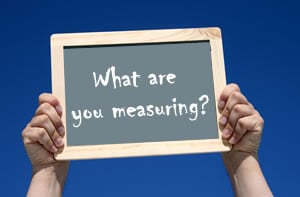 What’s the difference between marketing and sales? Ultimately, not much. Both aim to reach out to customers, keep them engaged, and foster long relationships with them. Marketing creates the personality of a brand and sales brings it to life for clients. The two go hand-and-hand as marketing is necessary to boost sales, and sales tend to self-market.
What’s the difference between marketing and sales? Ultimately, not much. Both aim to reach out to customers, keep them engaged, and foster long relationships with them. Marketing creates the personality of a brand and sales brings it to life for clients. The two go hand-and-hand as marketing is necessary to boost sales, and sales tend to self-market.
Throughout our blog, we’ve shared a handful of posts on field management KPIs mostly geared towards sales. Today, let’s focus on marketing. Just like sales managers, marketing managers need to keep track of KPIs, or key performance indicators. Measuring and analyzing the appropriate marketing KPIs and comparing them against a standard will simplify management and provide concrete, reliable data when making crucial decisions.
So, which KPIs should you measure? For marketers, the best guidance for choosing KPIs comes directly from your Intro to Marketing class: the four P’s. For you non-marketers out there, those would be product, price, place, and promotion.
Product
KPI: # of units sold per product
Which products are you marketing? Of the products you are marketing, which ones are selling the most? Measure the number of units sold of each product in a specific time period and compare them against each other. This way you can see which products are performing better than others, which products need more marketing attention, and investigate why some products are selling more than others. Perhaps you are marketing them using different strategies and one is working better than the other. Through keeping tabs on number of units sold, you can also do some A/B testing on certain attributes of a product. For example, if you are experimenting different colors on product packaging, you can group the number of units sold based on color of packaging and compare them against each other to see which colors sell the best.
Price
KPI: sales revenue, cost of campaign
This P is for the price of your campaigns compared to sales revenue. Make sure that sales revenue always exceeds marketing campaign costs. In other words, do you have a positive ROI (return on investment)? For example, how many inbound links on your blog posts led to purchases? Or, how did a certain Twitter campaign translate to sales revenue? Another easily quantifiable method is pay-per-click (PPC). If you are using online advertisements to get the word out about a certain product, how do the price of those clicks look against the sales revenue gained from it? If you find that a certain method of marketing isn’t generating enough sales, you should consider focusing your funds and efforts on a different method that optimizes your ROI.
Place
KPI: # of units sold per location
Keep track of sales volume and revenue based on store location. If sales are weak at one store, it may need some extra care and attention from the marketing team. Perhaps you can place a few extra promotional ads in their coupon handouts or send your demo crew over to give out free samples. Giving consumers a face or two to remember from your company will help them feel more connected to your brand too!
Promotion
KPI: Website traffic, ROI
This is an extension of both the sales revenue and the campaign cost KPIs from the section on pricing above. When running different promotions, which ones are most successful? Which ones gain the most website traffic or generate sales? Which campaign platforms optimize your ROI? If 60% of your traffic is coming from Facebook, give that account more attention rather than your Twitter or Instagram pages. If you run campaigns and promotions throughout the year, which season did you experience the biggest returns? There’s a lot you can gain from measuring ROI from different promotions and analyzing them.
When it comes to measuring KPIs, remember to be specific and measure over a consistent time period. Which specific KPIs you decide to measure always depends on your goal. For more information on KPIs, checkout our free KPI Template Toolkit below!


 What’s the difference between marketing and sales? Ultimately, not much. Both aim to reach out to customers, keep them engaged, and foster long relationships with them. Marketing creates the personality of a brand and sales brings it to life for clients. The two go hand-and-hand as marketing is necessary to boost sales, and sales tend to self-market.
What’s the difference between marketing and sales? Ultimately, not much. Both aim to reach out to customers, keep them engaged, and foster long relationships with them. Marketing creates the personality of a brand and sales brings it to life for clients. The two go hand-and-hand as marketing is necessary to boost sales, and sales tend to self-market. 

